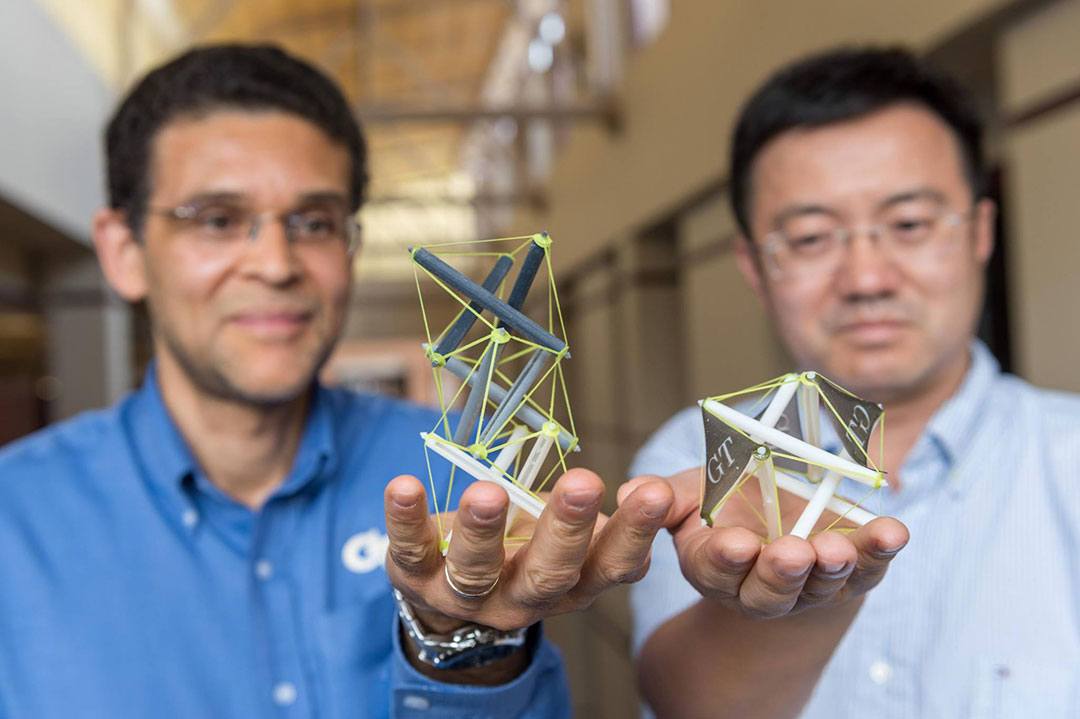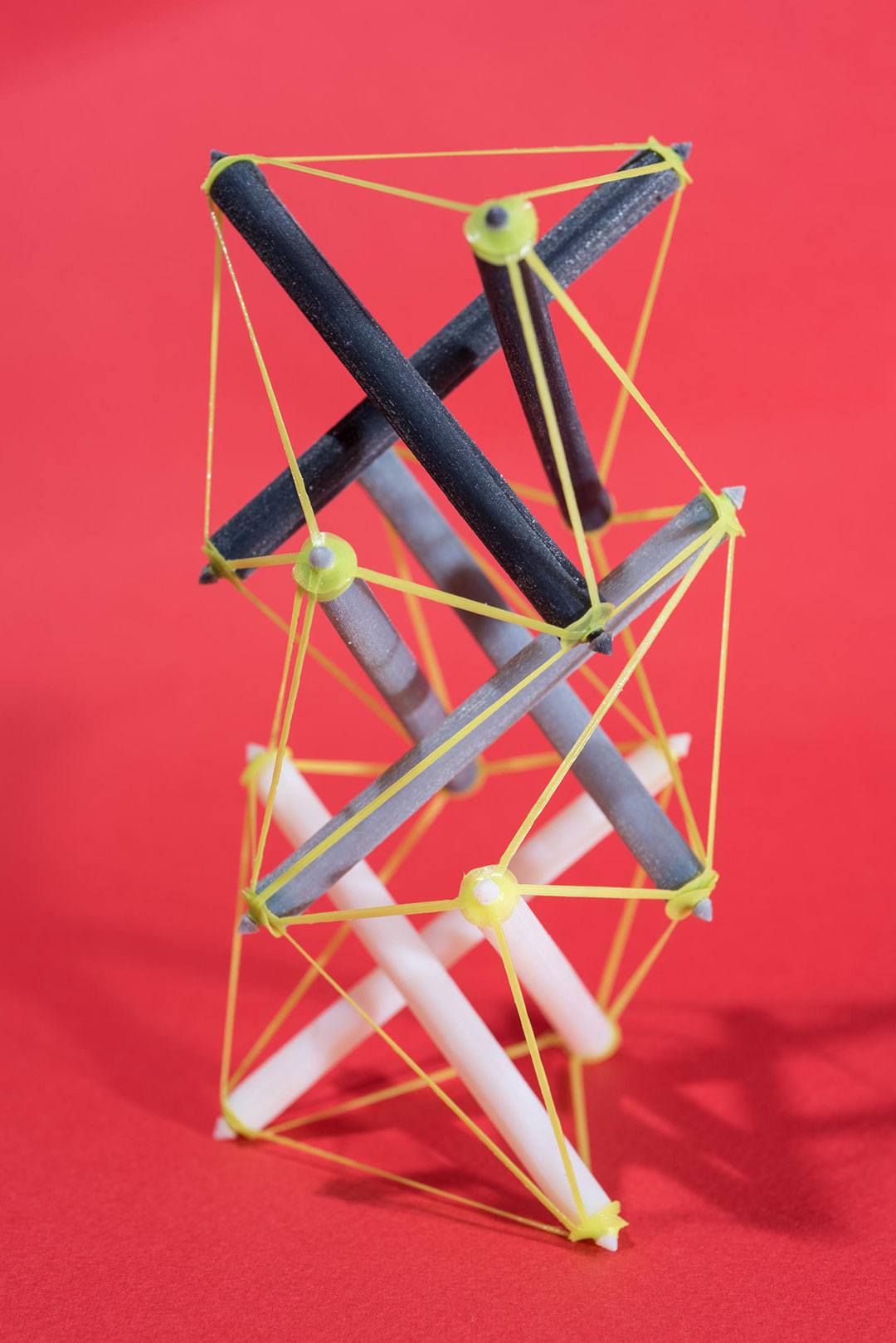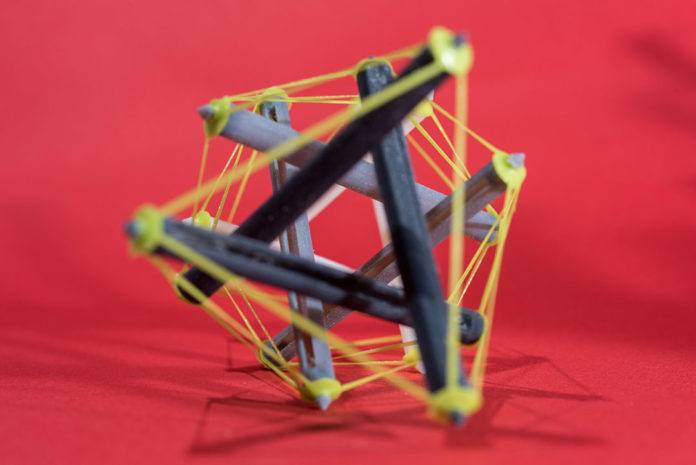Scientists at the Georgia Institute of Technology have created the 3D printed Tensegrity objects capable of expanding shape drastically. The objects use a structural system of floating rods in compression and cables in continuous tension called Tensegrity. According to scientists, the objects could one day be used in applications ranging from space missions to biomedical devices.
Originally, scientists have developed a way, where they used 3d printing method to create objects capable of expanding dramatically. They then fabricated the struts from shape memory polymers that unfold when heated. Although struts make up one of the primary components of the tensegrity structure.

Glaucio Paulino, a professor in Georgia Tech’s School of Civil and Environmental Engineering, and Jerry Qi, a professor in the George W. Woodruff School of Mechanical Engineering at Georgia Tech, hold objects 3-D printed that use tensegrity, a structural system of floating rods in compression and cables in continuous tension. (Credit: Rob Felt)
Glaucio Paulino, a professor in Georgia Tech’s School of Civil and Environmental Engineering said, “Tensegrity structures are extremely lightweight and strong. That’s the reason there’s a heavy amount of interest right now in researching the use of tensegrity structures for outer space exploration. The goal is to find a way to deploy a large object that initially takes up little space.”
Scientists designed the struts in hollow shape with a narrow opening that runs the length of the tube to enable them to be temporarily folded flat. Each strut has a connection point on each end to connect to a network of elastic cables.
Researchers then heated the struts to 65 degrees Celsius. By doing this, they were able to partially flatten and fold them into a shape resembling the letter W. The cold structures then retain the temporary shape.

Researchers at Georgia Tech 3-D printed an object made with tensegrity, a structural system of floating rods in compression and cables in continuous tension. (Credit: Rob Felt)
The key component of making these 3D printed tensegrity objects was controlling the rate and sequence of expansion. Through the shape memory polymers, scientists able to expand each strut by adjusting at which temperature the expansion occurs.
Jerry Qi, a professor in the George W. Woodruff School of Mechanical Engineering at Georgia Tech. said, “We believe that you could build something like an antenna that initially is compressed and takes up little space, but once it’s heated, say just from the heat of the sun, would fully expand.”
Paulino said, “For bigger and more complicated structures, if you don’t control the sequence that these struts expand, it tangles and you have a mess. By controlling the temperature at which each strut expands, we can have a phased deployment and avoid this entanglement.”
“These active 3D printed tensegrity objects are very elegant in design and open up a range of possibilities for deployable 3-D structures.”
